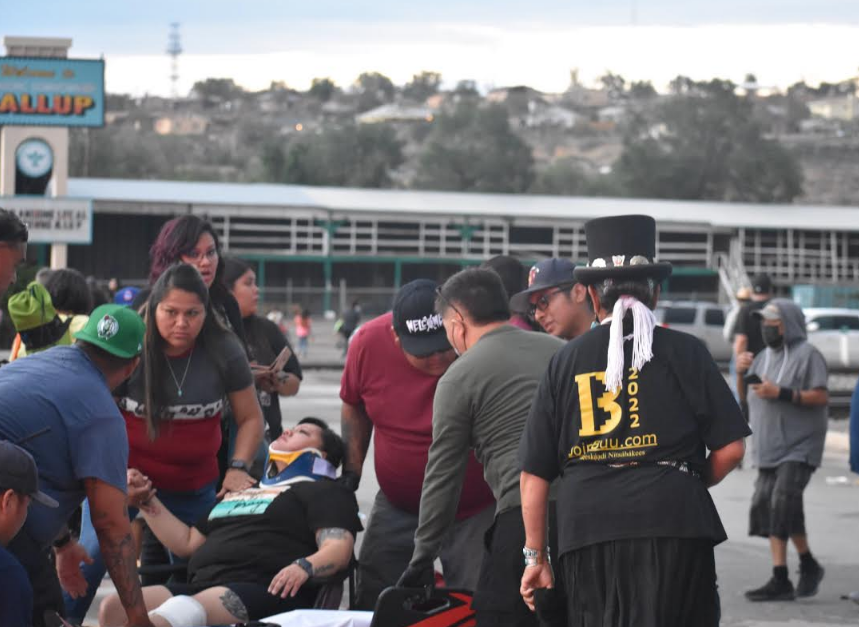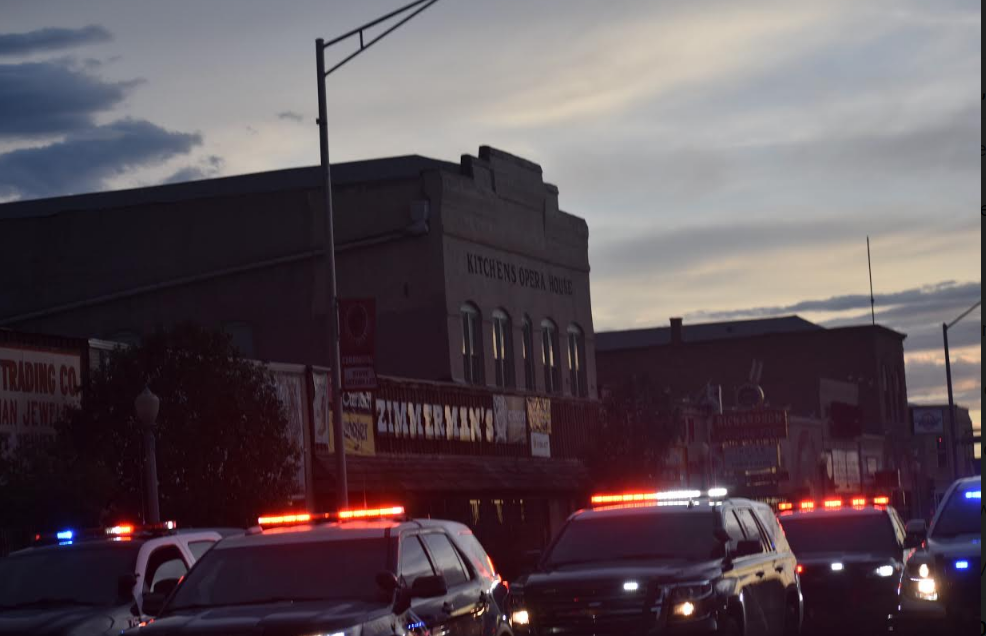
- Details
- By Darren Thompson
Update 11:30am EST: A Gallup city spokesperson has confirmed that three suspects were in the vehicle that drove through the parade. All three have been detained and names have not been released, but multiple sources have shared with Native News Online that all suspects are American Indian.
Breaking News. On a night that was meant for celebration turned into chaos at the kickoff of 100th annual Gallup Inter-tribal Ceremonial parade in downtown Gallup, New Mexico on Thursday evening when a truck aimed for the crowd of people.
William Hawk-Birdshead, a trained medic visiting the Navajo Nation, told Native News Online that he saw a tan GMC truck accelerate through the centennial Gallup Inter-tribal Ceremonial parade, around 8:10 p.m.
He said the truck came out of nowhere moments after Navajo Nation President Jonathon Nez appeared during the parade and ended with a stand-off at a nearby jewelry store, Red Shell Jewelry.
“People were screaming,” Hawk-Birdshead said of the incident Thursday night. “It was horrifying to witness. I can’t imagine the trauma this has caused for the people.”

KOAT reported that the City of Gallup said no spectators or parade participants have been hit by the vehicle. However, reports to Native News Online, show scenes of people injured and taken by ambulance. Native News Online has not confirmed the truck struck any parade attendees, but the truck aiming towards parade attendees may have caused a crowd commition that attributed to chaos that resulted in injuries.
Multiple sources, including the New Mexico State Police, reported there were several people injured, including two members of law enforcement.
President Nez posted this message on his Facebook page late Thursday evening:
"Navajo Nation President Jonathan Nez asks for prayers this evening after a vehicle drove through the Gallup Intertribal Ceremonial Parade this evening in downtown Gallup.
The Gallup Intertribal Ceremonial, New Mexico’s longest running and historic event, will take place in Gallup, August 4-14.
The Gallup Inter-tribal Ceremonial began in 1922, with traders wanting to attract tourists to local tribes, featuring music, powwows, parades, rodeo events, food, and vendors.
According to KOAT, The driver and two others inside the vehicle that drove into the parade were apprehended several blocks down the parade route.
Almost half of the city of Gallup's population is Native American
Gallup is a border town to the Navajo Nation. Almost half of its residents are Native American (47.7 percent).
This is a breaking news story and will be updated as more information becomes available.
More Stories Like This
Native News Weekly (August 25, 2024): D.C. BriefsUS Presidents in Their Own Words Concerning American Indians
Federal Court Dismisses Challenge to NY Indigenous Mascot Ban
Sen. Angus King Warns of ‘Whitewashing’ History in National Parks Under Trump Administration
Final Call for Donations as CRYP’s 2025 Toy Drive Nears the Finish Line
Help us defend tribal sovereignty.
At Native News Online, our mission is rooted in telling the stories that strengthen sovereignty and uplift Indigenous voices — not just at year’s end, but every single day.
Because of your generosity last year, we were able to keep our reporters on the ground in tribal communities, at national gatherings and in the halls of Congress — covering the issues that matter most to Indian Country: sovereignty, culture, education, health and economic opportunity.
That support sustained us through a tough year in 2025. Now, as we look to the year ahead, we need your help right now to ensure warrior journalism remains strong — reporting that defends tribal sovereignty, amplifies Native truth, and holds power accountable.
 The stakes couldn't be higher. Your support keeps Native voices heard, Native stories told and Native sovereignty defended.
The stakes couldn't be higher. Your support keeps Native voices heard, Native stories told and Native sovereignty defended.
Stand with Warrior Journalism today.
Levi Rickert (Potawatomi), Editor & Publisher

